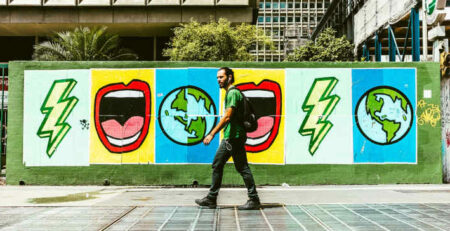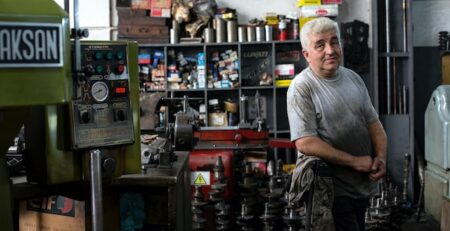5 Ways to Keep Your Talent Happy So That They Never Leave
Retaining top talent is crucial for any organization aiming to maintain a competitive edge and foster a productive work environment. In the realm of graphic design, where creativity and innovation are paramount, keeping your team members happy and motivated is even more critical. Here, we explore five effective strategies to ensure your talented employees are satisfied and loyal. These methods not only enhance their job satisfaction but also contribute significantly to the overall success and growth of your company.
Firstly, understanding the unique needs and aspirations of your graphic design team is essential. Each designer might have different career goals and preferences for how they work best. By acknowledging these individual needs, you can tailor opportunities and work environments that align with their desires, significantly boosting their morale and productivity.
Secondly, fostering a culture of recognition and reward is vital. Graphic designers often work on projects that require high levels of creativity and commitment. Regularly acknowledging their hard work and achievements can make them feel valued and appreciated, which is crucial for their long-term commitment to your company.
Thirdly, providing opportunities for professional growth and development is another key strategy. This could involve sponsoring attendance at workshops, providing access to courses, or offering clear pathways for career advancement within the organization. Such initiatives show your commitment to their professional success and personal growth.
Fourthly, encouraging a work-life balance is essential, especially in creative fields where burnout can be common. Implementing flexible working hours, allowing remote work, or setting up wellness programs can help maintain your team’s mental and physical health, leading to better work output and job satisfaction.
Finally, fostering a collaborative and supportive work environment is crucial. Graphic design is often team-oriented, and a positive, inclusive workplace can enhance creativity and innovation. Encouraging teamwork, open communication, and mutual support among team members can create a more enjoyable and productive work atmosphere.
Most Asked Questions About Keeping Talent Happy
- What specific benefits and perks most effectively boost graphic designers’ job satisfaction?
- How can leadership styles impact the morale of a graphic design team?
- What role does workplace flexibility play in retaining creative talent?
- How important is career development in the retention of graphic designers?
- What strategies can be implemented to foster a positive and collaborative team culture?
Benefits and Perks for Graphic Designers
When it comes to enhancing job satisfaction among graphic designers, specific benefits and perks can play a significant role. Offering competitive salaries is fundamental, but beyond monetary compensation, there are other incentives that can make a substantial difference. Health benefits, retirement plans, and bonuses tied to project successes or company profitability are highly valued.
Non-traditional perks also hold considerable appeal. Flexible hours and the option for remote work cater to the need for a work-life balance, especially crucial in creative jobs where inspiration can strike at any time. Providing state-of-the-art design tools and software, along with ergonomic workspaces, can significantly boost productivity and job satisfaction.
Encouraging continuous learning and professional development is another perk that resonates well with graphic designers. Access to courses, workshops, and seminars not only helps them stay ahead in a rapidly evolving field but also shows the company’s investment in their career growth.
Creating a supportive work environment is also essential. Regular team-building activities, wellness programs, and a pet-friendly office can enhance the work atmosphere, making it more enjoyable and relaxing.
Lastly, offering creative freedom within projects can be a significant perk for designers. Allowing them to explore their ideas and contribute to the conceptual stages of projects can lead to higher job satisfaction and a deeper sense of involvement in the company’s success.
Leadership Styles and Graphic Design Team Morale
The leadership style adopted by management can significantly impact the morale and productivity of a graphic design team. Leaders who are approachable and encourage open communication tend to foster a more dynamic and responsive creative environment. This type of leadership helps in building trust and transparency within the team, crucial for a collaborative creative process.
On the other hand, a micromanaging style can be detrimental, stifling creativity and autonomy, which are vital for graphic designers. Leaders should strive to provide clear directions and feedback while giving enough space for creative exploration. This balance can enhance motivation and reduce frustrations in the team.
Participative leadership, where team members are involved in decision-making processes, can also boost morale and commitment. When designers feel their opinions are valued and impact the company’s direction, their engagement and loyalty to the organization increase.
Transformational leadership, which focuses on inspiring and motivating employees by aligning company goals with personal and professional growth opportunities, can be particularly effective in creative settings. This approach can lead to higher innovation levels as team members are encouraged to pursue big ideas and take risks.
Lastly, providing regular feedback and recognition can help maintain high levels of enthusiasm and commitment. Positive reinforcement and constructive criticism can guide designers to continually improve and feel valued for their contributions.

Workplace Flexibility and Creative Talent Retention
Workplace flexibility is increasingly becoming a critical factor in retaining talent, especially in creative fields like graphic design. Allowing flexible work hours and the possibility for remote work can significantly contribute to job satisfaction and loyalty among graphic designers.
Flexibility in work location and hours acknowledges the unique nature of creative work, which does not always conform to a standard 9-to-5 schedule. This adaptability can lead to higher productivity as designers work during their peak creative times.
Moreover, remote work options allow employees to create their ideal work environments, which can be particularly beneficial for creativity. Reducing commute time and providing the ability to design a personalized workspace can lead to a better work-life balance and reduced stress.
However, it’s important to balance flexibility with the need for collaboration and communication. Regular check-ins and the use of collaborative tools can help maintain team cohesion and ensure that flexibility does not turn into isolation.
Employers should consider implementing policies that promote flexibility while also fostering a sense of community and teamwork. This approach not only attracts creative talent but also helps in retaining them for the long term.
Ultimately, embracing flexibility can demonstrate a company’s commitment to accommodating individual needs and promoting a healthy work-life balance, making it an attractive place for creative professionals to thrive.
Career Development in Retaining Graphic Designers
Career development is a pivotal aspect of job satisfaction and retention, particularly for graphic designers who are often driven by personal growth and the need to stay relevant in a rapidly changing industry. Providing clear career paths and development opportunities can significantly impact their decision to stay with a company.
One effective approach is to offer structured career advancement opportunities within the organization. This could include promotion paths from junior designer to senior roles, or even specialized tracks such as UX/UI design or creative direction. Such structures give designers clear goals and something to aspire towards.
Another key aspect is ongoing education and training. The graphic design industry is continually evolving with new technologies and trends. Companies that invest in regular training and upskilling opportunities show their commitment to their team’s growth and adaptability.
Mentorship programs can also be highly beneficial. Pairing less experienced designers with seasoned professionals not only helps in skill enhancement but also fosters a supportive work culture that values knowledge sharing and personal development.
Furthermore, encouraging participation in industry events and conferences can expand their professional network and expose them to new ideas and trends, which can be invigorating and inspiring.
Ultimately, when graphic designers see that their employer invests in their careers, they are more likely to feel valued and motivated to stay long-term, contributing to the company’s ongoing success and innovation.
Fostering a Positive Team Culture
The culture of a team can significantly influence its creativity, efficiency, and overall job satisfaction. For graphic design teams, fostering a positive and collaborative culture is essential for nurturing creativity and maintaining a high level of productivity.
One effective strategy is to promote open communication and transparency within the team. This includes regular meetings where everyone feels safe to express their ideas and concerns. Such an environment not only helps in resolving potential issues quickly but also boosts collective creativity.
Team-building activities can also play a crucial role in fostering a positive team culture. Whether it’s creative workshops, group outings, or team challenges, such activities can help strengthen bonds and improve collaboration among team members.
It’s also important to create an inclusive environment where all team members feel valued and respected. This can be achieved by recognizing and celebrating diversity within the team and ensuring that all voices are heard and considered in decision-making processes.
Leadership plays a crucial role in setting the tone for the team culture. Leaders who are supportive, fair, and approachable set a positive example and create an atmosphere where team members feel encouraged and valued.
Lastly, it’s beneficial to have clear values and goals that align with both the company’s mission and the team’s creative aspirations. When team members understand and share a common purpose, they are more likely to collaborate effectively and contribute to a positive, productive work environment.
Conclusion: Ensuring Long-Term Satisfaction and Retention
Keeping your graphic design talent happy and motivated is not just about implementing a few isolated strategies; it involves a comprehensive approach that considers various aspects of employment and workplace culture. From offering competitive benefits and flexible work options to fostering a supportive and inclusive environment, each element plays a crucial role in enhancing job satisfaction and retention.
Leadership style also has a significant impact on team morale and productivity. Leaders who are supportive, promote transparency, and encourage participation can help foster a culture of trust and creativity, which is essential for a graphic design team’s success.
Moreover, providing opportunities for career development and continuous learning can help keep your team engaged and motivated. These opportunities show that the company values their growth and is invested in their success.
Implementing these strategies requires a commitment to understanding and addressing the unique needs and aspirations of graphic designers. It’s about creating an environment where they can thrive creatively and professionally.
Ultimately, the effort put into keeping your talent happy is an investment in the company’s future. A motivated, creative, and loyal team is not just more productive but also better positioned to drive innovation and growth, ensuring the company’s success in the competitive market of graphic design.
By focusing on these key areas, companies can not only retain their best talent but also attract top professionals from the industry, continually enhancing their team’s capabilities and their brand’s reputation in the market.
In today’s competitive market, finding the right creative and marketing expert can be a challenge. But with icreatives, you’re in experienced hands. With 37 years in staffing and a track record of matching more than 10,000 employees to over 1,000 companies worldwide, we know how to connect you with the best. Plus, you only pay if you hire—there’s no risk, only results. Ready to find your perfect creative or marketing expert? HIRE WITH ICREATIVES today!












